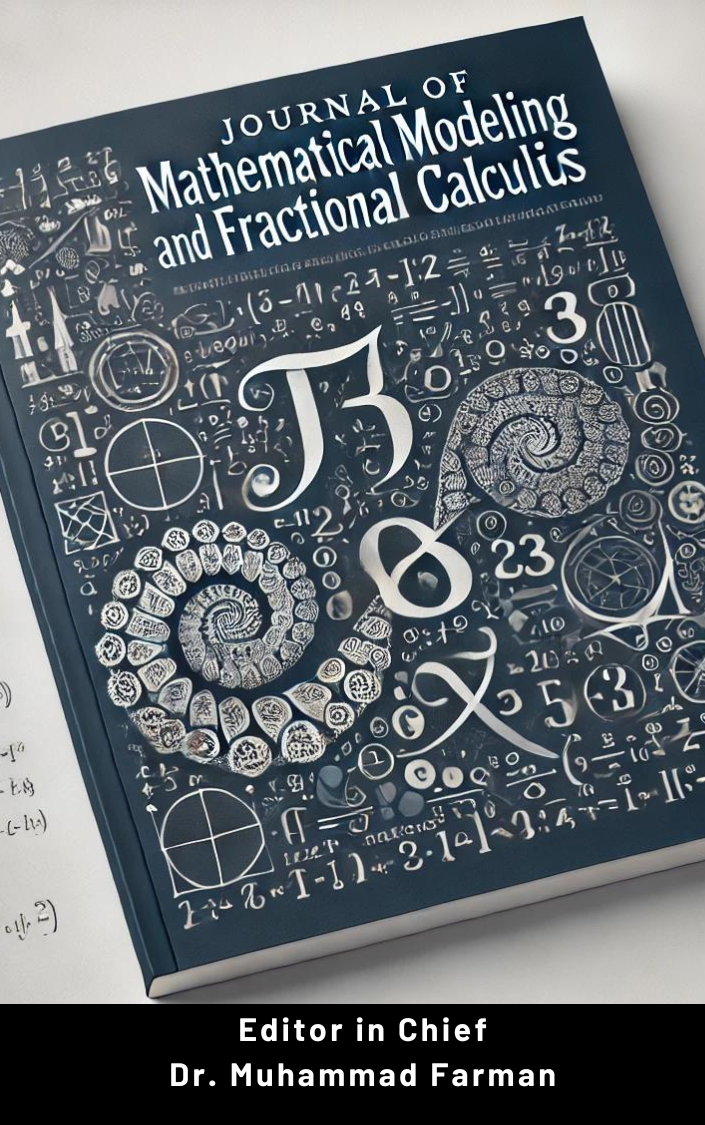On Double Delay Terms Robbin Boundary Value Problem with Fractional Derivative
DOI:
https://doi.org/10.48165/Keywords:
Fractional differential equations, Impulsive problems, boundary conditionsAbstract
In this manuscript, the existence theory of a mixed delay Robbin boundary value problem (RBVP) together with impulsive conditions is investigated. For the required results, we use topological degree of non-compactness. The concerned tools have the ability to relax the strong compact criteria to some weaker one. As compared to fixed point theory, the aforesaid proposed tools are more powerful and applicable in dealing various nonlinear problems of fractional order differential equations (FODEs) with different kinds of boundary conditions. Proper example is given to illustrate the results.
References
Books:
Gakhov, F. D. (2014). Boundary Value Problems. Elsevier.
Ladyzhenskaya, O. A. (2013). The Boundary Value Problems of Mathematical Physics (Vol. 49). Springer Science & Business Media.
Rogers, C. (1989). Nonlinear Boundary Value Problems in Science and Engineering. Academic Press, New York.
Miller, K. S., & Ross, B. (1993). An Introduction to the Fractional Calculus and Fractional Differential Equations. Wiley, New York.
Podlubny, I. (1999). Fractional Differential Equations: Mathematics in Science and Engineering. Academic Press, New York.
Hilfer, R. (2000). Applications of Fractional Calculus in Physics. World Scientific, Singapore.
Kilbas, A. A., Srivastava, H. M., & Trujillo, J. J. (2006). Theory and Applications of Fractional Differential Equations. North-Holland Mathematics Studies, Elsevier, Amsterdam.
Zhou, Y., Wang, J., & Zhang, L. (2016). Basic Theory of Fractional Differential Equations. World Scientific, Singapore.
Journal Articles and Conference Papers:
Lakshmikantham, V., & Vatsala, A. S. (2008). Basic theory of fractional differential equations. Nonlinear Analysis: Theory, Methods & Applications, 69(8), 2677–2682.
Lin, W. (2007). Global existence theory and chaos control of fractional differential equations. Journal of Mathematical Analysis and Applications, 332(1), 709–726.
Devi, A., Kumar, A., Abdeljawad, T., & Khan, A. (2021). Stability analysis of solutions and existence theory of fractional Langevin equation. Alexandria Engineering Journal, 60(4), 3641–3647.
Ahmad, M., Zada, A., & Alzabut, J. (2019). Stability analysis of a nonlinear coupled implicit switched singular fractional differential system with p-Laplacian. Advances in Difference Equations, 2019(1), 1–22.
Shah, K., Khalil, H., & Khan, R. A. (2015). Investigation of positive solution to a coupled system of impulsive boundary value problems for nonlinear fractional order differential equations. Chaos, Solitons & Fractals, 77, 240–246.
Saker, S. H., & Alzabut, J. O. (2009). On the impulsive delay hematopoiesis model with periodic coefficients. The Rocky Mountain Journal of Mathematics, 1657–1688.
Ahmad, B., & Wang, G. (2011). A study of an impulsive four-point boundary value problem of nonlinear fractional differential equations. Computers & Mathematics with Applications, 62, 1341–1349.
Shah, K., Ali, A., & Bushnaq, S. (2018). Hyers-Ulam stability analysis to implicit Cauchy problem of fractional differential equations with impulsive conditions. Mathematical Methods in the Applied Sciences, 41(17), 8329–8343.
Wang, J., & Feckan, M. (2016). A survey on impulsive fractional differential equations. Fractional Calculus and Applied Analysis, 19(4), 806–831.
Kaliraj, K., Manjula, M., & Ravichandran, C. (2022). New existence results on nonlocal neutral fractional differential equation in concepts of Caputo derivative with impulsive conditions. Chaos, Solitons & Fractals, 161, 112284.
Alzabut, J. O., Stamov, G. T., & Sermutlu, E. (2011). Positive almost periodic solutions for a delay logarithmic population model. Mathematical and Computer Modelling, 53(1–2), 161–167.
Stamov, G. T., Alzabut, J. O., Atanasov, P., & Stamov, A. G. (2011). Almost periodic solutions for an impulsive delay model of price fluctuations in commodity markets. Nonlinear Analysis: Real World Applications, 12(6), 3170–3176.
Xu, D., Huang, Y., & Liang, L. (2011). Existence of positive periodic solution of an impulsive delay fishing model. Bulletin of Mathematical Analysis and Applications, 3(2), 89–94.
He, Y., Wu, M., She, J. H., & Liu, G. P. (2004). Delay-dependent robust stability criteria for uncertain neutral systems with mixed delays. Systems & Control Letters, 51(1), 57–65.
Göllmann, L., & Maurer, H. (2014). Theory and applications of optimal control problems with multiple time delays. Journal of Industrial & Management Optimization, 10(2), 413.
Isaia, F. (2006). On a nonlinear integral equation without compactness. Acta Mathematica Universitatis Comenianae, 2, 233–240.
Wang, J. R., Zhou, Y., & Wei, W. (2012). Study in fractional differential equations by means of topological degree method. Numerical Functional Analysis and Optimization, 33(2), 216–238.
Ali, N., Shah, K., Baleanu, D., Arif, M., & Khan, R. A. (2017). Study of a class of arbitrary order differential equations by a coincidence degree method. Boundary Value Problems, 2017, 111.
Shah, K., & Hussain, W. (2019). Investigating a class of nonlinear fractional differential equations and its Hyers-Ulam stability by means of topological degree theory. Numerical Functional Analysis and Optimization, 40(12), 1355–1372.
Shah, K., Mlaiki, N., Abdeljawad, T., & Ali, A. (2022). Using the measure of noncompactness to study a nonlinear impulsive Cauchy problem with two different kinds of delay. Fractals, 28, 2240218.
Ullah, A., Shah, K., Abdeljawad, T., Khan, R. A., & Mahariq, I. (2020). Study of impulsive fractional differential equation under Robin boundary conditions by topological degree method. Boundary Value Problems, 2020(1), 1–17.

